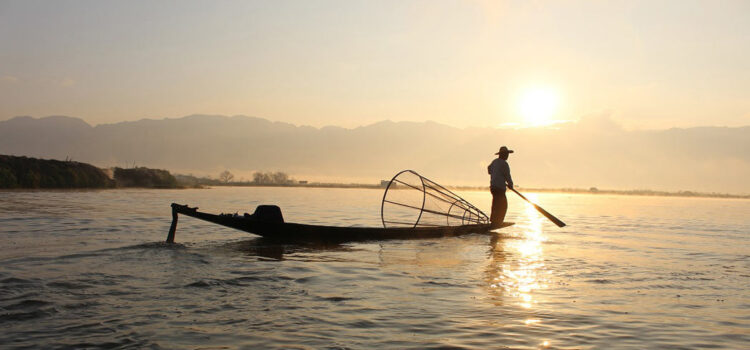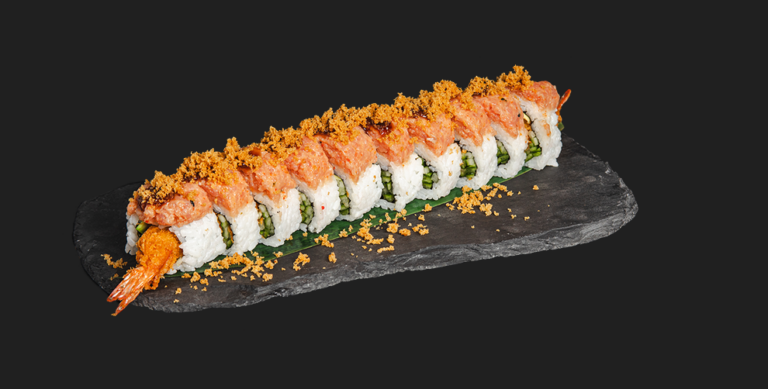Guide to Sustainable Seafood

Sustainable Seafood
There’s a lot of fish in the sea, but not all should end up on your plate. Learn which kinds of seafood were caught, farm-raised or harvested using environmentally sustainable practices.
Purchase Ocean-Friendly Seafood
Much of the public is unaware of the environmental damage caused by fishing practices. Overfishing, the removal of fish from the oceans faster than they can reproduce, is causing the depletion of certain types of fish around the world and threatening the availability of seafood. Non-ocean-friendly fishing practices are endangering “bycatch:” marine mammals, sea turtles and seabirds inadvertently caught in fishing nets and often left for dead. As if that isn’t bad enough, fishing practices such as bottom trawling and dredging can damage marine habitats like coral reefs, rocky ridges, boulders and kelp forests.
Check the Seafood Watch Program
Don’t worry, the solution isn’t swearing off seafood. Become an informed consumer of seafood and know which types were fished with environmentally unsafe practices, and which are safe to buy. The Monterey Bay Aquarium has developed a website, the Seafood Watch site, to assist consumers in making these buying decisions. The site has current reports by the Conservation Alliance for Seafood Solutions, links to other reference resources and a search tool for locating information on seafood by species name. Consumers can access the Seafood Watch online.
The Monterey Bay Aquarium has also issued consumer wallet guides containing the latest information on seafood choices available in each state of the U.S. Items are rated as Best Choices, Good Alternatives or Avoid. Shoppers can download the card at the official website.
Look for the “Certified Sustainable Seafood” Label
You can also look for a “Certified Sustainable Seafood” label on ocean-friendly seafood in markets, thanks to the Marine Stewardship Council. The council makes the judgment about a fishery’s sustainability with three principles: the condition of the fish stock, the impact of the fishery on the marine ecosystem and the fishery management systems. To learn more about the council’s standards, visit the official website.
If you want to do more to ensure future generations of sustainable seafood, you can start with local organizations like the Chesapeake Bay Foundation. The CBF was founded more than 40 years ago to improve water quality by reducing pollution, thus making the Bay a safer living environment for sea life. To find out what you can do, visit the official website.
Sustainability of Various Fish
| Low Risk |
| Alaska salmon (wild-caught) |
| Albacore tuna, U.S. or Canada |
| Atlantic mackerel, U.S. (wild-caught) |
| California Spiny Lobster (wild-caught) |
| Catfish, U.S. (farmed) |
| Clams, mussels, abalone, oysters and bay scallops (farmed) |
| Crawfish, U.S. (farmed) |
| Dungeness, imitation, kona and stone crabs |
| Freshwater Coho salmon, U.S. (farmed) |
| King and Spanish mackerel (wild-caught) |
| Pacific cod, U.S. fisheries |
| Pacific halibut (wild-caught) |
| Pacific sardines (wild-caught) |
| Rainbow trout (farmed) |
| Shrimp, U.S. (farmed) |
| Striped bass |
| Tilapia, Ecuador & U.S. (farmed) |
| Some Problems |
| Atlantic herring, U.S. (wild-caught) |
| Black, red and Hawaiian grouper |
| Blue, snow, Jonah and king crabs |
| Caviar, Sturgeon, U.S. (farmed) |
| Mahi mahi, U.S. |
| Mid-Atlantic Black seabass, U.S. (wild-caught) |
| Pacific soles (wild-caught) |
| Sea scallops |
| Squid |
| Tilapia (Asia) |
| Abundant Problems |
| Atlantic cod |
| Atlantic flounders and soles (wild-caught) |
| Atlantic halibut (wild-caught) |
| Atlantic Salmon (farmed) |
| Bigeye, skipjack, yellowfin and blue-fin tuna |
| Caviar, Sturgeon, imported (wild-caught) |
| Chilean seabass |
| Freshwater eel (farmed) |
| Orange roughy |
| Rockfish |
| Sharks |
| Shrimp, imported |
| Snappers |
| Swordfish |
| U.S. Atlantic, gag, snowy, Warsaw and yellowedge grouper |
Hopefully the next time you are craving a bite of Chilean seabass or Pacific red snapper, you’ll think twice. They are on the lists of seafood to avoid, as well as most types of shark, orange roughy, farmed salmon and imported shrimp. Get the facts before you buy.
Related Content:
• The Risks of Mercury in Fish
• Caviar 101




